Current/Recent Projects
Removal of micropollutants and recovery of nutrients in anaerobic wastewater treatment
This research is being performed under the thrust of the NEW (nutrients, energy, clean water) paradigm where wastewater treatment plants are seen as opportunities for nutrient and resource recovery. As 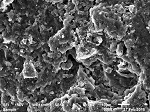 energy demands continue to rise, wastewater treatment must be performed in more efficient manners. Moreover, it is imperative to recovery nutrients while removing harmful micropollutants from the water environment. Thisresearch project is focused on developing innovative applications for recovering nutrients and removing micropollutants from domestive wastewater. This work is funded by a grant (PI-McNamara, Co-PI Mayer) from the NSF I/UCRC WEP Center. energy demands continue to rise, wastewater treatment must be performed in more efficient manners. Moreover, it is imperative to recovery nutrients while removing harmful micropollutants from the water environment. Thisresearch project is focused on developing innovative applications for recovering nutrients and removing micropollutants from domestive wastewater. This work is funded by a grant (PI-McNamara, Co-PI Mayer) from the NSF I/UCRC WEP Center.
This work is in collaboration with Prof. Brooke Mayer (Civil Engineering).
Return to top
Antimicrobial resistance genes
Antibiotic resistance is an increasingly serious public health problem. Antibiotic resistance in bacteria has been known to arise from exposure to antibiotics, but recent literature has shown that antimicrobials used for personal hygiene and sanitation may also have an active role in the proliferation of resistance to clinically important antibiotics. Given that antimicrobials accumulate in wastewater treatment,
antim icrobials in these systems could have a significant impact on antibiotic resistance in the environment. Triclosan and triclocarban are two antimicrobials which are ubiquitously found in wastewater treatment and persist in sub-therapeutic concentrations. With mounting pressure to remove these compounds from the consumer market, further research is needed to understand how wastewater treatment systems may react if these compounds are no longer present. The goal of this research is to elucidate how adaptation time to triclosan and triclocarban impacts the abundance of antimicrobial resistance genes in anaerobic digestion. This work is funded by a grant (PI-McNamara) from the Lafferty Family Foundation. icrobials in these systems could have a significant impact on antibiotic resistance in the environment. Triclosan and triclocarban are two antimicrobials which are ubiquitously found in wastewater treatment and persist in sub-therapeutic concentrations. With mounting pressure to remove these compounds from the consumer market, further research is needed to understand how wastewater treatment systems may react if these compounds are no longer present. The goal of this research is to elucidate how adaptation time to triclosan and triclocarban impacts the abundance of antimicrobial resistance genes in anaerobic digestion. This work is funded by a grant (PI-McNamara) from the Lafferty Family Foundation.
This work is in collaboration with Prof. Dan Zitomer (Civil Engineering) and Prof. Krassi Hristova (Biological Sciences).
Return to top
Removal of estrogenic micropollutants from wastewater biosolids via pyrolysis
Handling of wastewater biosolids is an expensive undertaking for wastewater treatment plants(WWTPs). Land applying biosolids, however, can alleviatefinancial burdens as biosolids can be sold as a valuablesoil conditioner. Public concern over land application hampers the value of biosolids, 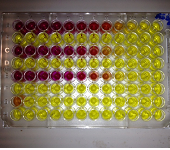 andconcern stems from micropollutantsassociated with biosolids. Wastewater treatment processes are not specifically designed to remove micropollutants and thus many micropollutants remain in the biosolids. This research investigates pyrolysis, the partial decomposition of organic material in an oxygen-deprived system under high temperatures, as a sustainable solution for removing estrogenic compounds from biosolids while producing a useable soil conditioner in biochar. This work combines lab-scale studies with sampling at full-scale plants to determine the benefit of adding pyrolysis as a polishing treatment step. This work is graciously funded by the Lafferty Foundation (PI-Zitomer, Co-PI McNamara) and the Marquette Graduate School (PI-McNamara) SFF/RRG program.The portion of this work funded by the Lafferty Foundation is in collaboration with Prof. Dan Zitomer (Civil Engineering) andconcern stems from micropollutantsassociated with biosolids. Wastewater treatment processes are not specifically designed to remove micropollutants and thus many micropollutants remain in the biosolids. This research investigates pyrolysis, the partial decomposition of organic material in an oxygen-deprived system under high temperatures, as a sustainable solution for removing estrogenic compounds from biosolids while producing a useable soil conditioner in biochar. This work combines lab-scale studies with sampling at full-scale plants to determine the benefit of adding pyrolysis as a polishing treatment step. This work is graciously funded by the Lafferty Foundation (PI-Zitomer, Co-PI McNamara) and the Marquette Graduate School (PI-McNamara) SFF/RRG program.The portion of this work funded by the Lafferty Foundation is in collaboration with Prof. Dan Zitomer (Civil Engineering)
Return to top
Electrocoagulation for removal of estrogens from drinking water
Water treatment technologies are continually being developed for applications ranging from emergency 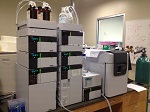 treatment to point-of-use treatment. Electrocoagulation has potential to not only meet conventionaldrinking water standards, but also remove emerging contaminants, such as environmental estrogens, that appear on the Contaminant Candidate List. This work investigates the removal efficiency of estrogens in electrocoagulation relative to conventional drinking water treatment, and is being funded by a grant from the the National Science Foundation (PI-Mayer, Co-PI McNamara). This work is done in collaboration with Prof. Brooke Mayer (Civil Engineering). treatment to point-of-use treatment. Electrocoagulation has potential to not only meet conventionaldrinking water standards, but also remove emerging contaminants, such as environmental estrogens, that appear on the Contaminant Candidate List. This work investigates the removal efficiency of estrogens in electrocoagulation relative to conventional drinking water treatment, and is being funded by a grant from the the National Science Foundation (PI-Mayer, Co-PI McNamara). This work is done in collaboration with Prof. Brooke Mayer (Civil Engineering).
Return to top
Antimicrobials and Archaea: Impact of Triclosan and Triclocarban on Pure Culture Methanogens
Our recent results from anaerobic mixed community experiments indicate that antimicrobials could be  directly inhibiting methanogens. The objective of this project is to determine the susceptibility of pure culture methanogens to antimicrobials, and relate these findings back to mixed community results. This work is funded by a grant from the Marquette College of Engineering Undergradaute Research Fund (PI-McNamara). directly inhibiting methanogens. The objective of this project is to determine the susceptibility of pure culture methanogens to antimicrobials, and relate these findings back to mixed community results. This work is funded by a grant from the Marquette College of Engineering Undergradaute Research Fund (PI-McNamara).
Return to top
The effect of co-digestion on the anaerobic degradation of NPEO to NP
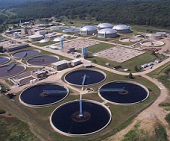 Nonylphenol (NP) and nonylphenol ethoxylates (NPEO) represent one of the most prevalent groups of estrogenic compounds in wastewater. These compounds are used in detergents, and NPEO biodegrade to NP during wastewater treatment. As a result of the hydrophobic nature of nonylphenol mono and diethoxylates (NP1EO, NP2EO), these compounds readily sorb to biosolids where they are often stabilized through anaerobic digestion. NPEO readily degrade to NP under anaerobic conditions while NP does not readily degrade. The extent of this biodegradation process in wastewater treatment is important because NP is more estrogenic than NPEO. This biodegradation process is typically limited by either bioavailability or metabolism. This research investigates the role that co-digestion, relative to conventional anaerobic digestion, has on the overall metabolic activity of the microbial community and the biodegradation of NPEO to NP. This project is funded by a grant (PI-McNamara) for undergraduate research from the Marquette Opus College of Engineering. Nonylphenol (NP) and nonylphenol ethoxylates (NPEO) represent one of the most prevalent groups of estrogenic compounds in wastewater. These compounds are used in detergents, and NPEO biodegrade to NP during wastewater treatment. As a result of the hydrophobic nature of nonylphenol mono and diethoxylates (NP1EO, NP2EO), these compounds readily sorb to biosolids where they are often stabilized through anaerobic digestion. NPEO readily degrade to NP under anaerobic conditions while NP does not readily degrade. The extent of this biodegradation process in wastewater treatment is important because NP is more estrogenic than NPEO. This biodegradation process is typically limited by either bioavailability or metabolism. This research investigates the role that co-digestion, relative to conventional anaerobic digestion, has on the overall metabolic activity of the microbial community and the biodegradation of NPEO to NP. This project is funded by a grant (PI-McNamara) for undergraduate research from the Marquette Opus College of Engineering.
This work is done in collaboration with Prof. Dan Zitomer (Civil Engineering), an expert on co-digestion.
Return to top
Recent Projects
The fate of micropollutants following pyrolysis
The spread of micropollutants (e.g. prescription drugs, plasticizers, and pesticides) into the environment is receiving considerable attention as micropollutants are regularly detected in water reclamation facility effluents and residual solids, or biosolids. Concern exists over these micropollutants due to their demonstrated ability to harm or alter aquatic life and 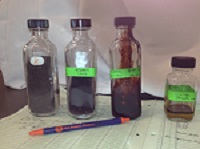 spread antibiotic resistance. Pyrolysis, the thermochemical decomposition of organic matter in an oxygen free environment in an elevated temperature range (400 – 850 °C), offers potential for micropollutant removal from biosolids while producing renewable energy and a value-added solid product called biochar. The goal of this research is to evaluate pyrolysis of wastewater biosolids for its ability to remove and/or destroy micropollutants found in biosolids. Specifically, the fate of micropollutants following pyrolysis will be determined in the solid, liquid, or gas phase to determine if micropollutants are destroyed. This work is funded by a grant (PI-Zitomer, Co-PI McNamara) from the NSF-IUCRC WEP center, and is done in collaboration with Prof. Dan Zitomer (Civil Engineering). spread antibiotic resistance. Pyrolysis, the thermochemical decomposition of organic matter in an oxygen free environment in an elevated temperature range (400 – 850 °C), offers potential for micropollutant removal from biosolids while producing renewable energy and a value-added solid product called biochar. The goal of this research is to evaluate pyrolysis of wastewater biosolids for its ability to remove and/or destroy micropollutants found in biosolids. Specifically, the fate of micropollutants following pyrolysis will be determined in the solid, liquid, or gas phase to determine if micropollutants are destroyed. This work is funded by a grant (PI-Zitomer, Co-PI McNamara) from the NSF-IUCRC WEP center, and is done in collaboration with Prof. Dan Zitomer (Civil Engineering).
Return to top
| 






